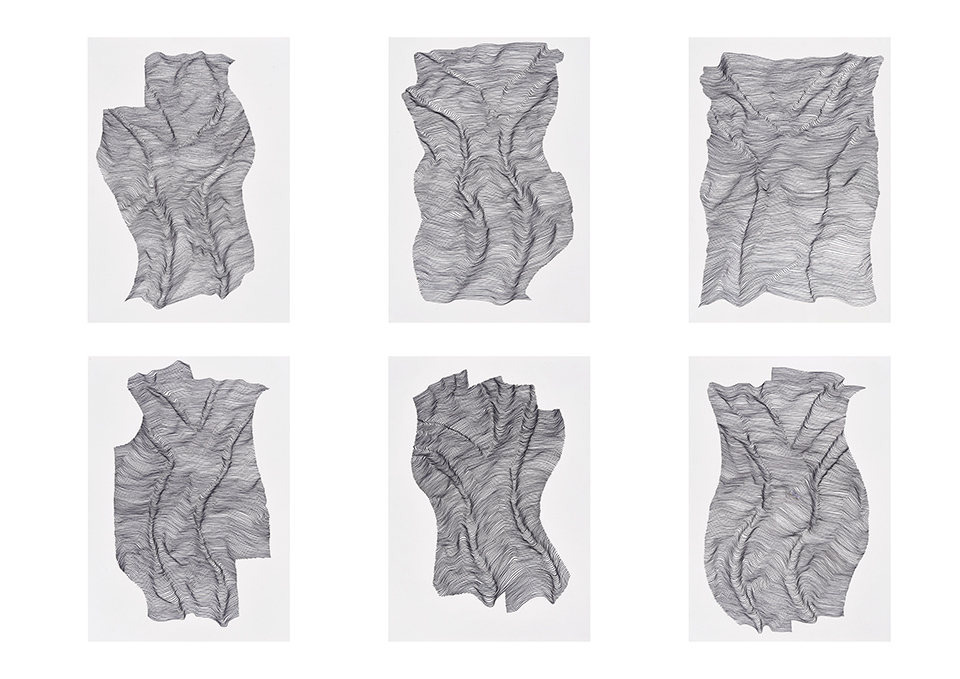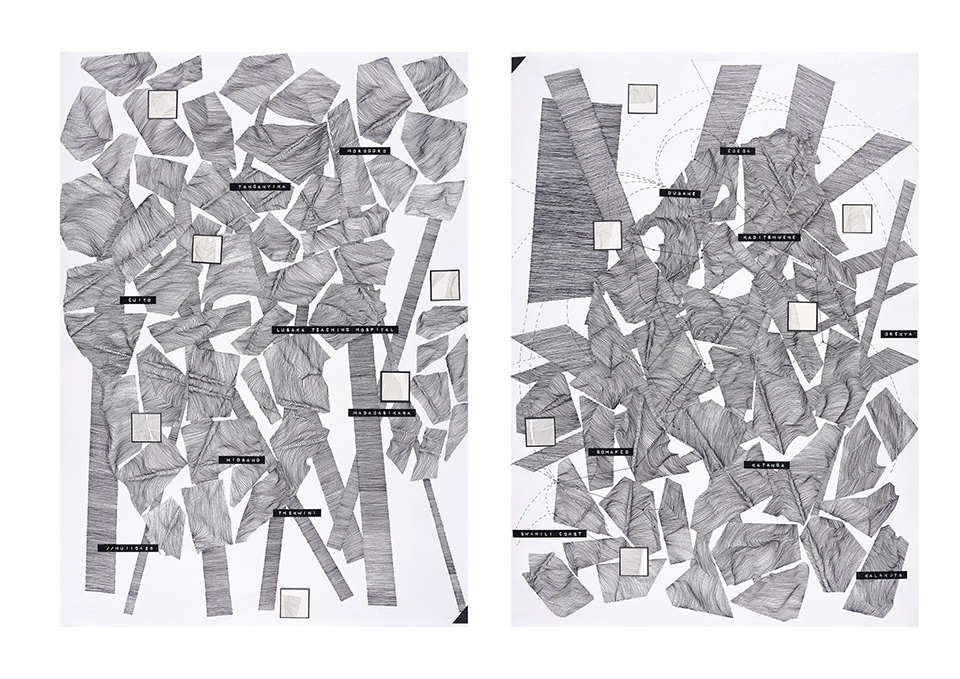Nolan Oswald Dennis’ current exhibition, titled Furthermore, at the Goodman Gallery in Cape Town resists (neo)colonial logics of closure and destabilises the necrological dimensions of neo-imperial violence that continue to suffocate the vitality of life within the “always collapsing social fiction” of a ‘new’ South Africa. Instead of circumscribing what constitutes ‘reality’ through the exclusions of reductive tendencies, Furthermore seeks to open up a wide field of engagement where points of tension are explored through an acknowledgement of multiple epistemologies and perspectives.
The title of the show is an indication of these complexities in its significance as both a stereotypical trope of political jargon and as a word that continually expands the centre to bring into orbit the significance of that which is constructed as peripheral. What does it mean to notice the complexity of gestures involved in the recent removal of the statue of Rhodes, where it wasn’t simply unceremoniously toppled in a realisation of necessary decolonial vengeance but was carefully hoisted by the arm of a crane, holding preservation together with removal? What could these movements signify if seen in relation to the archaeological violence of the removal of other statues over a hundred years ago, which facilitated the incorporation and appropriation of the Zimbabwean Birds into Rhodes’ personal mythology, and moved toward stasis where the best ‘specimen’ remains in The Groote Schuur Manor House, the current home of South Africa’s president? How do bodies contain the traces of technologies of violence enacted in the bizarre melting-down of artefacts through the Ancient Ruins Company?

Another Country I to VI (image courtesy of Goodman Gallery)
Furthermore points to ways in which both the presence and the absence of memory can indicate how it is institutionalised or ideologically incorporated into (and appropriated for) nationalist conceptions and (neo)colonial forms of domination which seek to invalidate alternative imaginings and thus, the creation of alternative forms of life. The implications of memory are expanded through considerations of complicacy which circumvent particular ascriptions of identity and subjectivity and breathe against unequivocal integration into hegemonic forms of political sovereignty. In all of these foldings, Furthermore illuminates the ways in which acts always contains their own dissidence and seems to suggest that it is this difficulty that can actually enable engagement and understanding.
Dennis’ work carries the feeling of a contemporary articulation of Aimé Césaire’s resignation letter to Maurice Thorez, where Césaire stated that; “I am not burying myself in a narrow particularism… But neither do I want to lose myself in an emaciated universalism… My conception of the universal is… enriched by all that is particular” and that “it is life itself that decides.” In a vital embrace of becoming, Furthermore exhibits a transformative form of politics concerned with altering ontology, with irrupting integration into the bankruptcy of artificially discrete ideas.
The work of Dennis exploits inherent tensions in order to turn a system back on itself. The scent of this is carried in the way that Furthermore manipulates the aesthetic markers of the official and mimics the austere and processional tone of that which is sanctioned. The box is a central concern in the way that is can simultaneously obfuscate and draw attention-to. What constitutes a blanket-statement and how does this relate to a texture touching skin? History is captured in the impermanence of wax. There is a kind of urgent short-circuiting of algorithmic meaning played out in the patient intricacy of networks of lines. The aggressive pontification of the linearity of time is suspended through the co-presence of rocks and screens, unattributed texts from indiscernibly ‘different’ times which resonate together. There is a sense of the way in which graves are sometimes marked by deliberately damaged pots; of how new meanings can emerge and circulate.

Dark Places I & II (image courtesy of Goodman Gallery)
When I spoke to Dennis about Furthermore, he spoke about the symbolism involved in how gallery spaces attempt to present neutrality through a deliberate lack of self-memory, an active evisceration of all signs of what has come before; how the ‘art world’ is a huge industrial machine for moving money across borders and the ways in which everything else just functions to validate this; how an awareness of these limitations saw a manoeuvring of format for growth and explorations which can then perhaps enable other kinds of engagement; how the work can never be about the completed objects which are really just the excess of the work of trying to understand; how even intimate autobiographical aspects get captured and claimed, constantly repeated under the reductive and paradoxically distancing guise of ‘engagement’. All of these threads that weave together, all of the attendant things; the continuities in spite of the projected fragmentations.
Furthermore demands a new language and speaks to ways in which South Africans are no longer satisfied with the placating illusions of freedom, suspended in a series of active irresolutions. It reflects a radical praxis and offers an example of how some of the most thorough decolonial work is happening beyond the codified landscapes of engagement. Furthermore is part of a subversive love that will see South Africa invented anew and that risks singing madly with Sankara that we must dare to invent the future,
Furthermore…



















































